Expectations are high — after all, this is yet another chapter in a glorious story that is making great strides towards its 15 years. And during that period of time, the Renault Mégane RS has always been one of the most revered hot hatch on the market.
The time has come to discover the third chapter of this saga and there are many fears — the changes brought about in this new generation of Mégane RS are extensive, at the level of what we saw in the Clio RS, and we all know that the results were not as expected in the smallest Renault Sport representative.
What has changed?
Like the Clio, the Renault Mégane RS also lost its three-door bodywork, being only available with five doors — like many manufacturers, Renault too has decided to exclude them from its portfolio. Don't sell? Street.
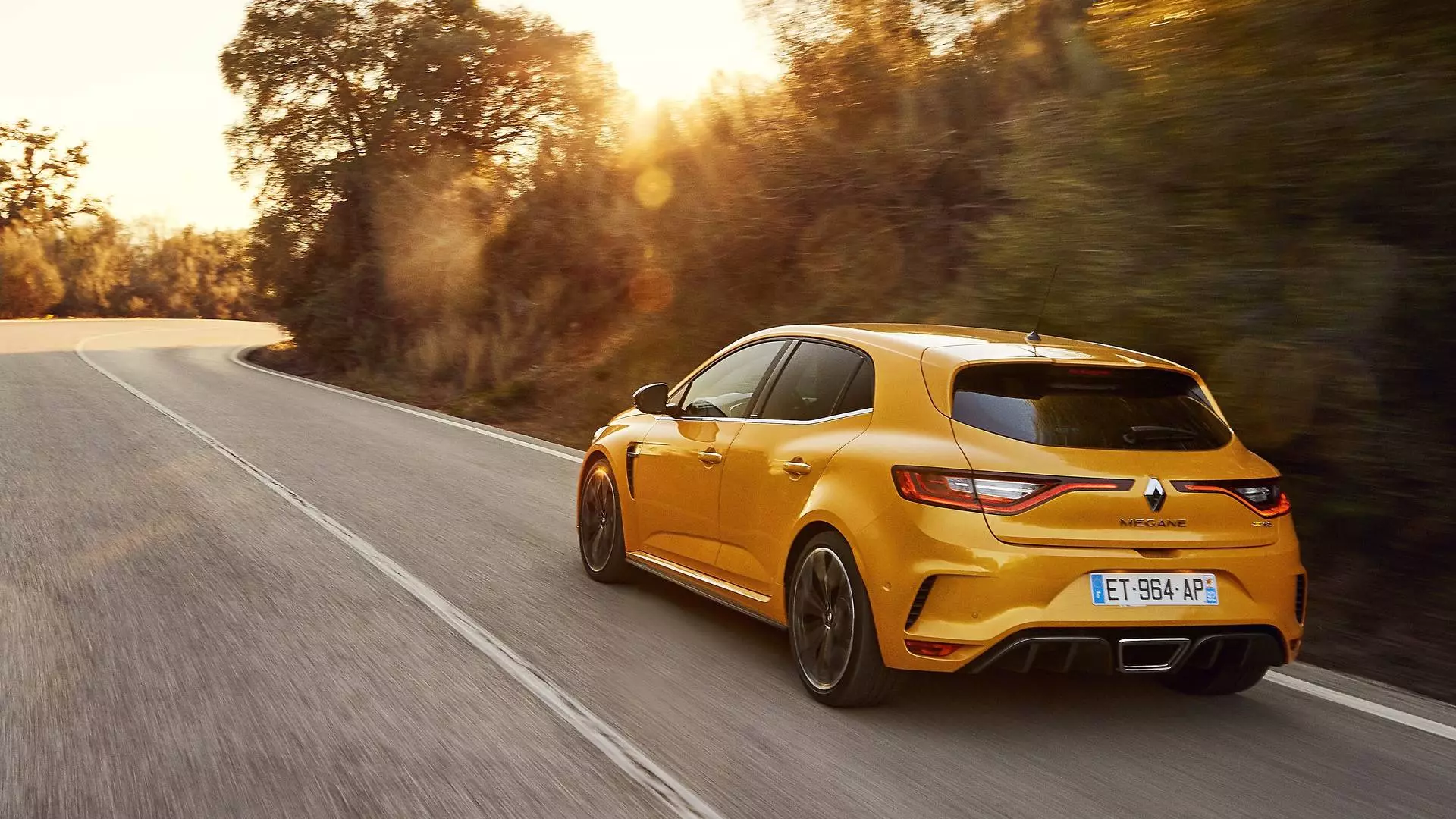
Also left out was the F4RT — too easy a joke if you're English speakers… —, the engine that has always powered the Renault Mégane RS. The 2.0 liter turbo was replaced by the brand new M5PT , premiered by the Alpine A110. It's still a four-cylinder in-line, but now with 1.8 liters, keeping the turbo (naturally…). It may be smaller, but it's no less powerful — the M5PT guarantees 280 hp at 6000 rpm (five more than the last RS Trophy and 28 hp more than the A110), and 390 Nm of torque between 2400 and 4800 rpm .
There are now two broadcasts — one from dual six-speed clutch (EDC) and manual, with the same number of gears. A word of appreciation for Renault Sport, which even knowing that the manual gearbox should be a small part of the sales mix, kept it in the new generation. Even if it doesn't sell, there are solutions that remain in our hearts.
And RS also changed, but this time, compared to the other Mégane. Wider tracks 60mm at the front and 45mm at the rear have led to the design of new bumpers, which feature a Formula 1-style blade, and mudguards — the look is clearly more muscular with the optional 19-inch wheels. of the tested unit to properly fill the arches, and the pose of the car much more assertive.
It doesn't fall into visual exaggerations, everything is weighted and measured and almost, almost everything is correctly integrated. It also contains trademark details, such as the RS Vision optics at the front — with their characteristic pattern reminiscent of a checkered flag — and the central exhaust outlet that have accompanied the Mégane RS since its inception.
The chassis also brings news…
If there is one thing that the Mégane RS has always stood out for is its behavior and the capacity of its chassis. And once again, Renault Sport follows its path: behind it a torsion bar remains, when the competition brings independent suspension. And adaptive suspension like its rivals? No thanks, says Renault Sport. There are many ways to reach the same destination, and Renault Sport has chosen an interesting route (but we'll be there).
In this generation, Renault Sport has equipped the Mégane RS with new dynamic arguments, with two new features. For the first time, an RS brings the 4CONTROL system , in other words, four directional wheels, already known from other models of the brand, but for the first time present in an RS and exclusive among its peers.
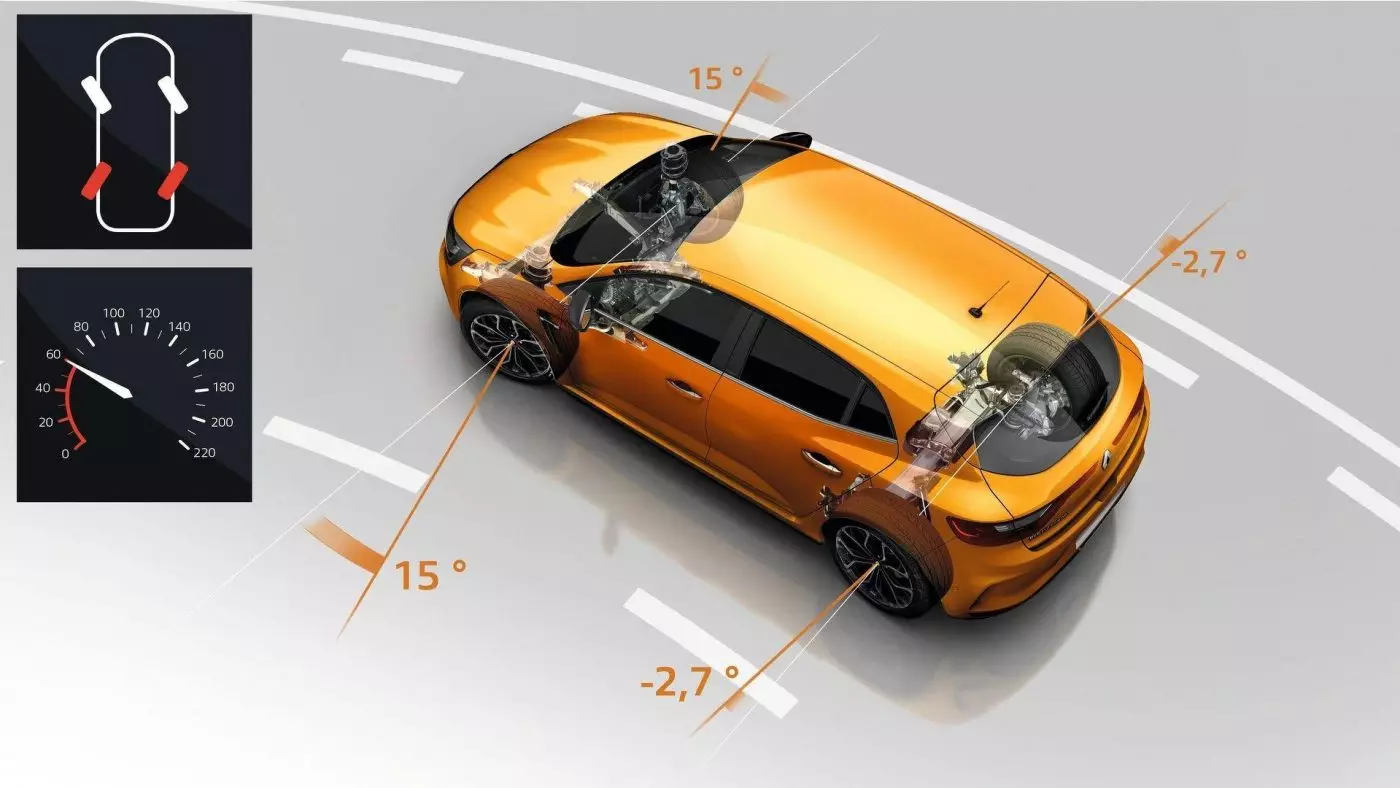
Below 60 km/h the 4Control system turns the wheels away from the front wheels to increase cornering agility. In Race mode, this operating mode is active up to 100 km/h.
The second novelty is the introduction of four hydraulic compression stops on shock absorbers , an inspired solution from the world of rallying, and it is, in short, a “bumper within a shock absorber”. A secondary piston inside the damper dampens wheel movement as the suspension approaches the end of its travel, dissipating energy without “re-sending” it to the wheel. Allows an optimized control of the contact between the tire and the road, avoiding the rebound effects that occur with conventional stops. Ingenious? No doubt.
…and it's the best of Megane RS
Without a doubt, the chassis is the star on the Renault Mégane RS. The presentation took place in Jerez de la Frontera, Spain, and the route chosen, with a rather boring first part — sometimes more like the Baixo Alentejo, with long straights —, but which later offered us the “mother of mountain roads” . Roller coaster was perhaps the more correct term—very convoluted, narrow, somewhat rundown, dips, various gradients, blind turns, descending, climbing... it seemed to have it all. Undoubtedly the ideal challenge for this chassis.
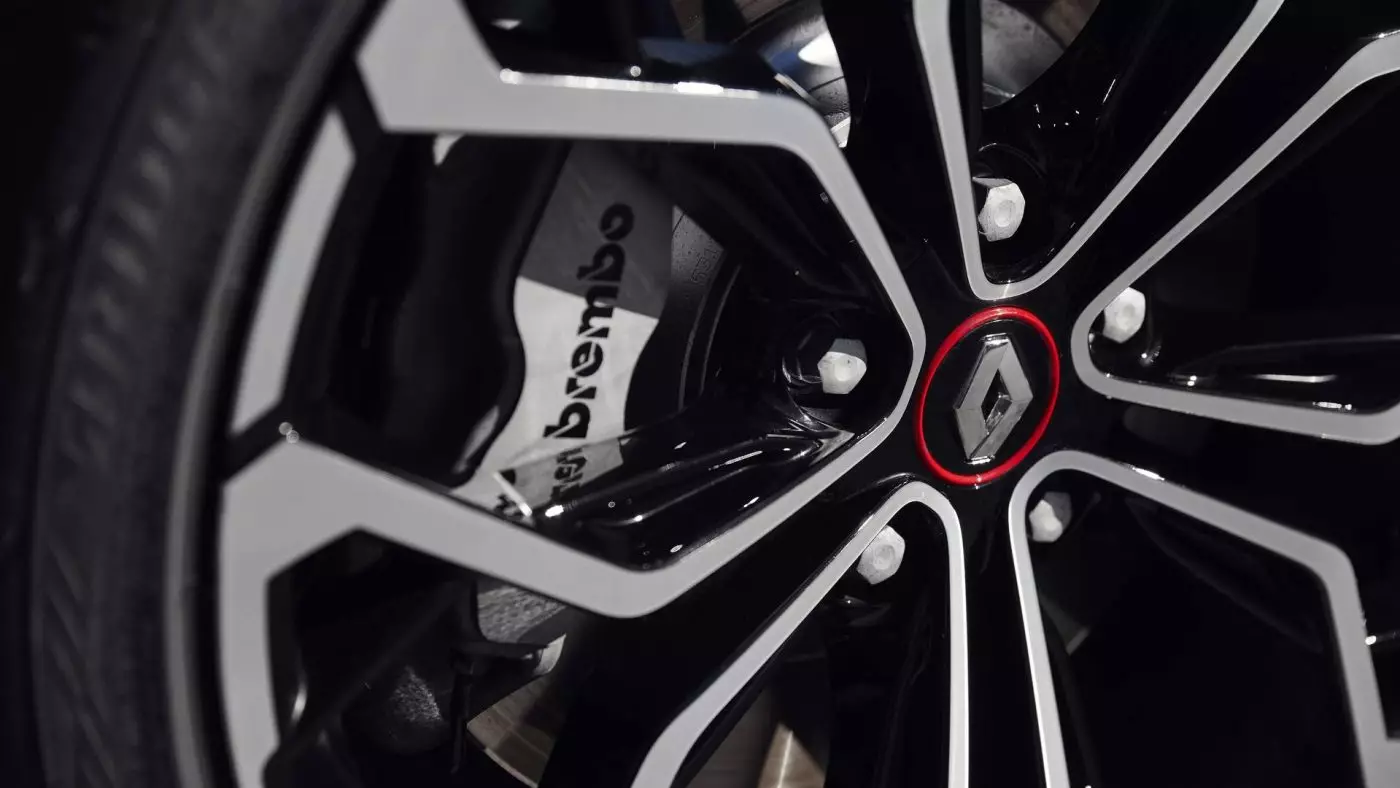
18" wheels as standard. 19" wheels are optional
Superb is the only word I can think of to define the chassis of this car. — Renault Sport's expertise in chassis design is remarkable. The chassis absorbs everything with overwhelming efficiency, allowing paces at unstoppable speeds on a road that was barely enough to cross two cars.
The chassis is firm, no doubt, but never uncomfortable. It is actually one of its greatest assets — the banks, always with excellent support, also help. Absorbs irregularities with surprising efficiency, keeps the trajectory clear, undisturbed. Even when the road posed impossible challenges, like the occasional depression, the suspension never “kicks”; it just absorbed the impact and continued down the path, as if it were nothing. I hope my vertebrae said the same, such is the compression...
Also nothing to point to the 4CONTROL — Renault Sport claims that it has been specially calibrated for this version. I never felt any “unnatural” reaction from the steering — always precise and with the right weight, but I'd like more sensitivity — or the chassis to my commands. The agility is surprising in the quick changes of direction, even knowing that the car is over 1400 kg. And the extra agility guaranteed, allows you to keep your hands on the wheel always in the same position, at “a quarter to three”, even when the curves are tighter.
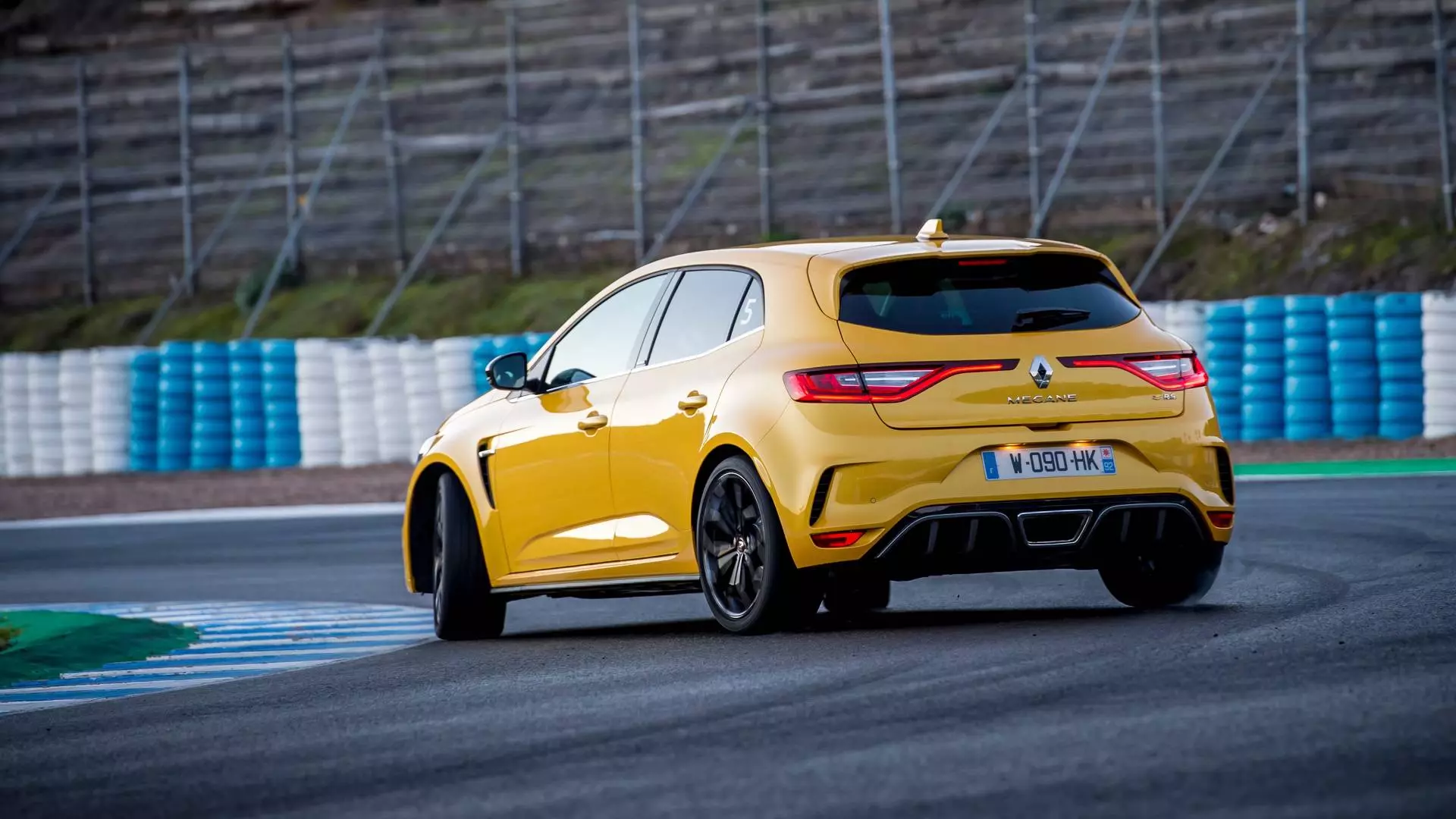
Don't confuse effectiveness with lack of fun. The Renault Mégane RS reacts when provoked and likes to play. In Sport mode, the ESP gets a lot more permissive, so you can expect understeer and steer torque when you squish the throttle at the wrong time, and braking in support results in the rear releasing, sometimes sharply and very exciting. Inert is something that the Mégane RS is not!
engine convinces
Fortunately, the engine, while not quite up to chassis level, kept up convincingly — excellent response from the lowest revs, seemingly non-existent turbo lag, and a taste for high revs characterize it. It could have sounded better.In the case of the Mégane RS, if the bass sound was convincing from the outside, it left something to be desired inside. In the first few kilometers behind the wheel, it even sounded artificial — suspicions that were later confirmed, when the brand's officials claimed that the engine's sound is digitally enriched. You too, Megane…
But nothing to doubt about its capabilities. The Renault Mégane RS 280 EDC is fast — 5.8 seconds up to 100 km/h, 25 seconds up to 1000 m and capable of reaching 250 km/h — and its ease in reaching high speeds is impressive. Only when we look at the speedometer do we realize how fast we are going and how the Mégane RS does it as if it were the most natural thing in the world.
The sideburns, oh, the sideburns…
Renault Sport's confidence in its new creation is clearly high — it only made available for road tests the Renault Mégane RS 280 EDC with Sport chassis, perhaps the most “civilized” version of the hot hatch. The EDC box, the reason for many concerns among fans of the model, turned out to be better than expected, decided and quick in general (Sport mode), but sometimes with a will of its own — I confess that I drove more in manual mode than that on automatic. Even in manual mode, and if the revs go up too much, the ratio is automatically engaged.
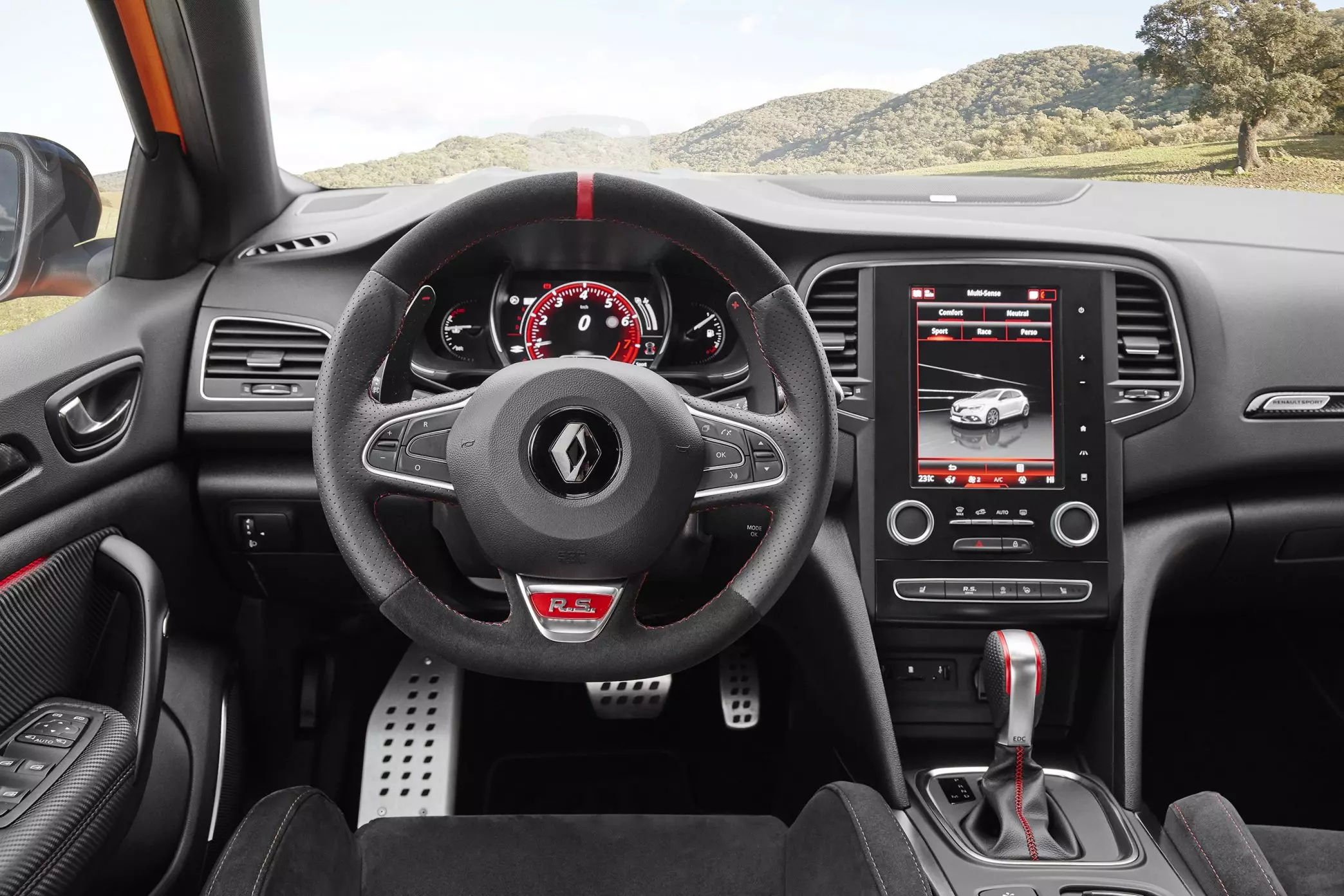
The tabs that allow you to select relationships, on the other hand, need to be rethought. They're bigger than most, no doubt, and they're attached to the steering column — which is good — but they're bigger where they don't matter. It was necessary a few more inches to go down and, also important, to be a little closer to the steering wheel.
RS Monitor
The Renault Mégane RS comes equipped with a telemetry and data indication device and comes in two versions. The first synthesizes information from 40 sensors and makes it possible to view various parameters on the R-Link 2 touchscreen: acceleration, braking, steering wheel angle, 4CONTROL system operation, temperatures and pressures. The second, called RS Monitor Expert, even allows you to film the action, and overlay telemetry data, creating augmented reality videos. Videos that can later be shared on social networks — through Android and iOS apps — and the saved data can be exported to the R.S. Replay website, which can be viewed and analyzed in detail, and compared with other users,
in circuit
After convincing on the road, there was also the opportunity to try out the Mégane RS on a circuit, and as you can already see from the location of the presentation, it was naturally at the Jerez de la Frontera circuit, best known for the MotoGP races that take place there.
Only this time, at my disposal, there was the other Renault Mégane RS, the one with manual gearbox and Cup chassis — 10% more rigid damping, Torsen self-locking differential, and optionally cast iron and aluminum brakes, which save 1.8 kg in unsprung masses.
Unfortunately, the experiment was brief — no more than three laps launched — but it allowed several things to be ascertained. First, the manual box adds a layer of interaction with Mégane RS that is much more appealing than tabs. It's a short-stroke fast box, basically a treat to use, even when in attack mode on the circuit.
Second, it wasn't possible to tell if the suspension's 10% extra stiffness handles irregularities well — we couldn't test it on the road — since the circuit had a smooth floor like a pool table. Thirdly, in Race mode, the ESP is truly off which forces a more sensitive throttle dosing, especially when exiting corners.
Fourth, the brakes seem to be relentless. The cars had been on the circuit for more than two hours, constantly changing hands, and they withstood all kinds of abuse, always offering all the necessary power and with an always excellent pedal feel.
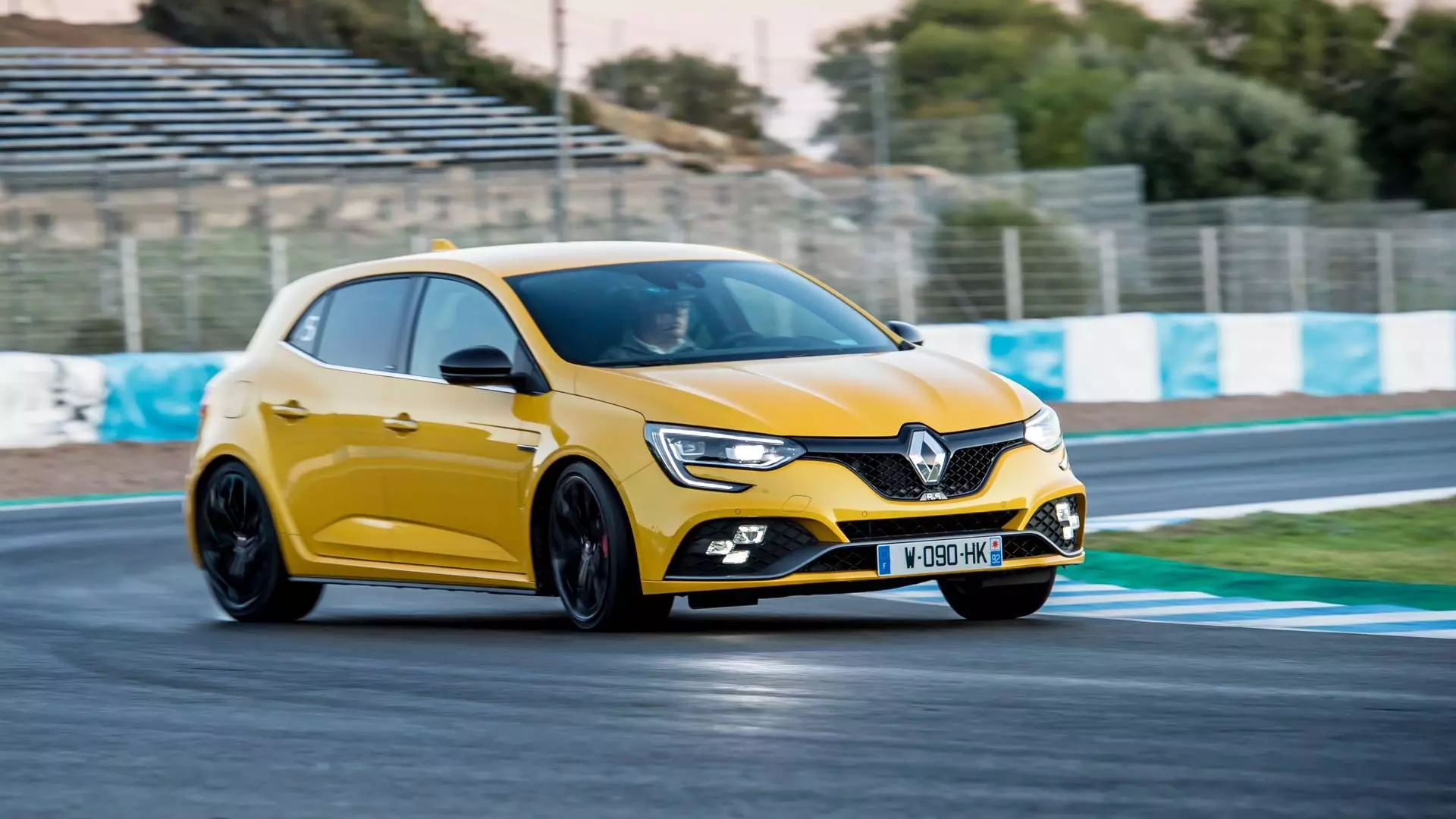
In Portugal
The arrival of the Renault Mégane RS on the national market will be phased in. The first to arrive will be the Mégane RS 280 EDC, with a Sport chassis — just like the road-tested model —, with prices starting at 40,480 euros . The Mégane RS 280 with manual transmission, will arrive later, with prices starting at 38,780 euros.
The range will continue to grow. In addition to the RS 280 with manual gearbox and EDC, and the two chassis options — Sport and Cup —, the RS Trophy , with 300 hp, which should be present at the next Paris Salon, in October.
